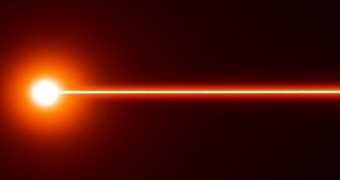Earlier this year, American multinational corporation the Boeing Company filed an application with the US Patent and Trademark Office for a new-generation engine relying on lasers and radioactive materials to provide thrust and keep an airplane, a missile, a rocket or maybe even a spacecraft moving at top speed.
The application was approved in late June, which means that the Boeing Company now holds a patent for what might be the absolute coolest propulsion system the world has ever seen.
How would such an engine even work?
For starters, let's clarify this one minute detail: the fact that Boeing now holds a patent for a laser-powered propulsion system for airplanes, rockets, missiles, spacecraft and the like does not mean that the company is actively pursuing the development of such an engine.
It just means that it might try its hand at putting together a propulsion system of this kind sometime in the future. When exactly this could happen is a guessing game at this point.
As for how the laser-powered engine would work, the description included in the patent application is remarkably simple and straightforward. In a nutshell, the concept propulsion system would fire lasers at radioactive material to spark controlled explosions and generate thrust.
“The lasers vaporize the radioactive material and cause a fusion reaction - in effect a small thermonuclear explosion,” Boeing scientists explain in the patent application.
“Hydrogen or helium are the exhaust byproducts, which exit the back of the engine under high pressure. Thrust is produced,” they add. If you have some free time on your hands, check out the video below to learn more about how Boeing envisions the engine working.
The Boeing Company has a thing for lasers
By the looks of it, the scientists working with American corporation the Boeing Company are quite passionate about lasers. Thus, this novel propulsion system is not their first project that involves harnessing such intense beams of light.
Au contraire, it was back in March that Boeing filed yet another patent for a rather wacky invention: a laser-made force field designed to keep military vehicles, aircraft, vessels and possibly even buildings safe from shockwaves produced by explosions.
This concept force field, which, much like the recently patented propulsion system, will likely go a long while before being made real, would work by firing lasers into the air to create plasma. In turn, the plasma would attenuate shockwaves.

 14 DAY TRIAL //
14 DAY TRIAL // 